2020 was the year we celebrated NOAA’s 50th anniversary while also hunkering down and learning how to adapt to education in the time of COVID-19. Over the course of only a few weeks, NOAA educators across the nation had to pack up their hands-on demonstrations and find new ways to reach the public from behind a computer screen. We asked educators from across the agency to share their most exciting recent photos* — plus a “blast from the past” in honor of NOAA’s 50th. Here are some of our favorites.
Note: Some photos were taken prior to social distancing guidelines related to COVID-19.

Education in action
NOAA Education loves seeing docents in action! In the fall of 2019, volunteer Madur Dwarakanath (left) is seen talking about seashells and rocks on display with guests at the Hatfield Marine Science Center offsite link in Newport, Oregon. Oregon Sea Grant offsite link operates the public education wing of the center.
Photo by Casey Henley/Broken Banjo Photograph
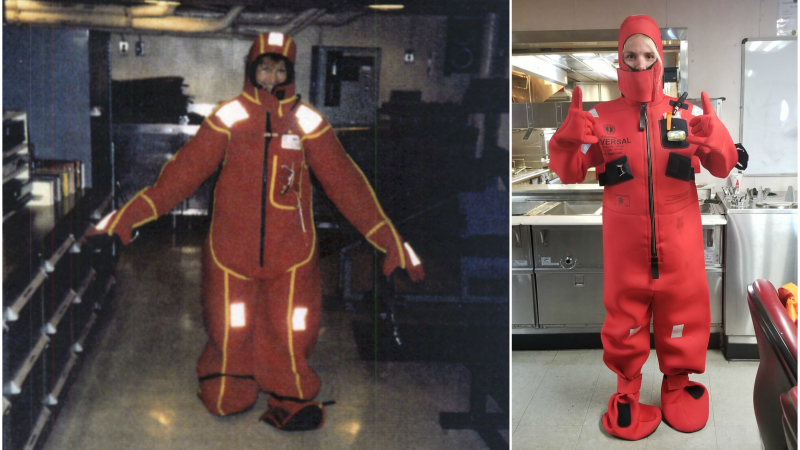
The evolution of the “Gumby suit”
For three decades, teachers from around the nation have assisted NOAA scientists in conducting vital research at sea through NOAA's Teacher at Sea Program. Key to their experience is learning how NOAA keeps crew and scientists safe. In this then-and-now comparison, teachers Virginia Figura (left) and Callie Harris (right) try on survival suits — nicknamed “Gumby” suits for their shape — 26 years apart. Survival suits are designed to prevent hypothermia at sea. Virginia sailed on the now-decommissioned NOAA Ship Miller Freeman in 1993, while Callie sailed on NOAA Ship Oscar Dyson in 2019.
Photo by NOAA Teacher at Sea Program
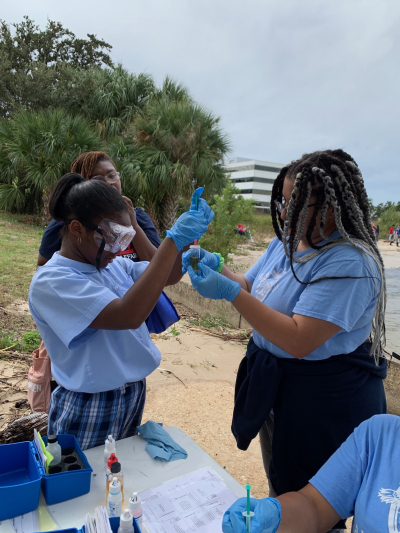
Students, science, and sand
In the fall of 2019, Lake Forest students from New Orleans, Louisiana, measured dissolved oxygen levels at Pontchartrain Beach. This activity was part of the Pontchartrain Conservancy's Gulf of Mexico Bay Watershed Education and Training (B-WET) project. NOAA B-WET grantees provide Meaningful Watershed Educational Experiences for students, focusing on learning both outdoors and in the classroom.
Photo by Dinah Maygarden/University of New Orleans
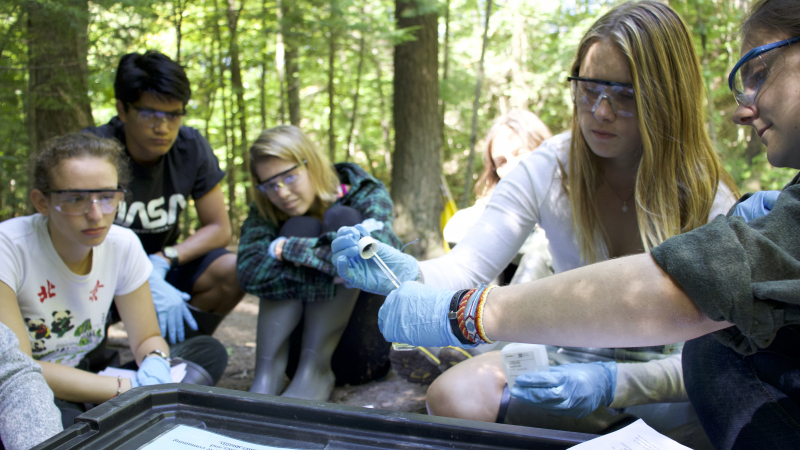
Training students to teach the next generation of environmental stewards
At the Lake Champlain Sea Grant offsite link Watershed Educator Internship training in the fall of 2019, undergraduate students at the University of Vermont were trained on stream monitoring protocols as a part of the Watershed Alliance community science program. Interns learn how to monitor chemical, biological, and physical parameters of freshwater streams, which they then teach to K-12 students across the Lake Champlain basin.
Photo by Ashley Eaton/Lake Champlain Sea Grant
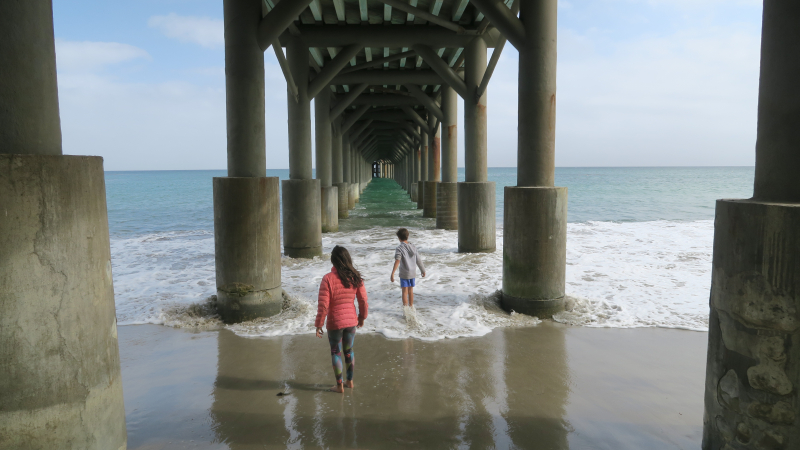
Pier joy
Young students explore the pier at Santa Rosa Island in NOAA's Channel Islands National Marine Sanctuary. People of all ages come to Santa Rosa Island to learn about the sanctuary, the ocean, and all it has to offer.
Photo by Claire Fackler/NOAA Office of National Marine Sanctuaries
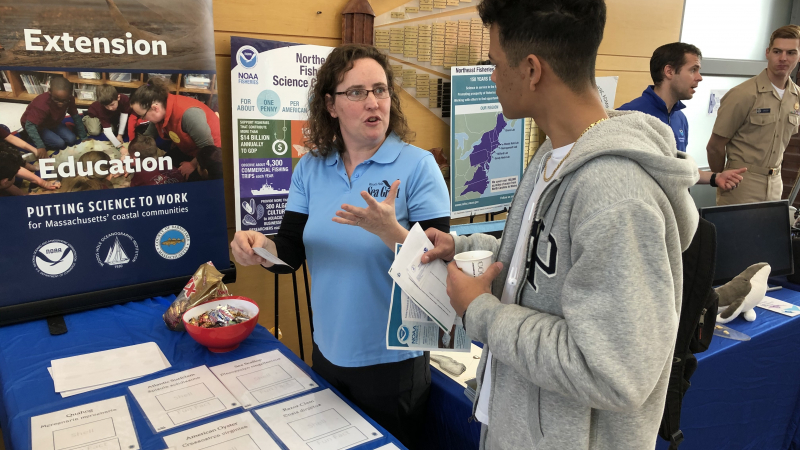
Faces of NOAA educators
At the Blue Economy Waterworks Career Fair in early January 2020, students engaged in many hands-on activities to explore Cape Cod's blue economy and its many career options. Woods Hole Sea Grant offsite link educator, Grace Simpkins, is explaining to a high school student how to take the "shellfish quiz" to learn more about the research this NOAA program contributes to in the aquaculture field.
Photo by Shelley Dawicki/NOAA Fisheries
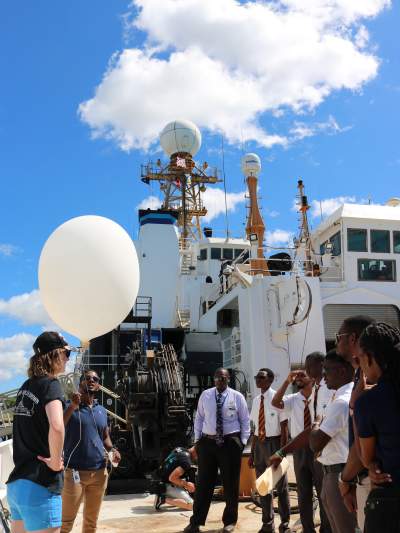
A weather balloon on a boat: The ultimate NOAA experience
In early January 2020, Bajan students toured the NOAA Ship Ronald H. Brown to learn about the international ATOMIC campaign. The island of Barbados served as the hub for ATOMIC operations and science tours allowed local students to meet visiting scientists and discuss weather research.
Photo by Cindy Sandoval/NOAA Fisheries
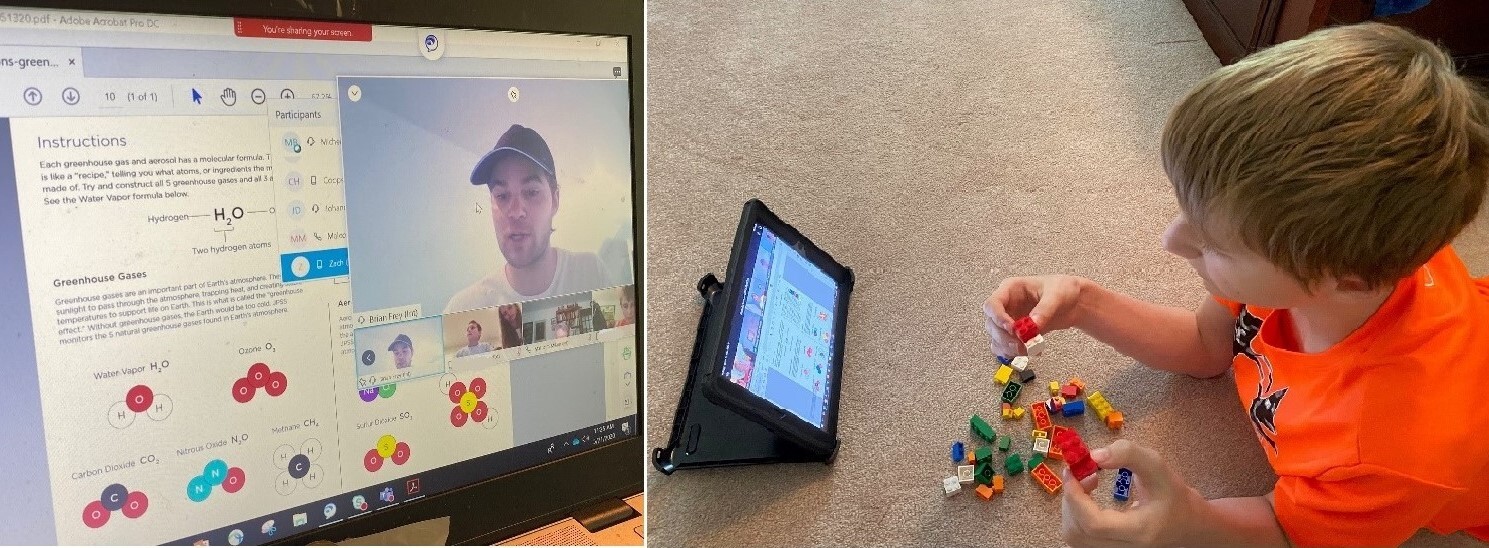
Exploring the atmosphere … at home
In May of 2020, the NOAA/NASA Joint Polar Satellite System (JPSS) partnered with the Anne Arundel County, Maryland, Public Library System to present their first virtual STEM engagement activity, Exploring the Atmosphere. After the COVID-19 pandemic canceled public outreach events, the JPSS Communications Team adapted one of their outreach activities into an online experience. This activity guided participants to use materials found at home in place of the kits they bring to in-person events.
Photo by Michelle Birdsall/NOAA/NASA Joint Polar Satellite System
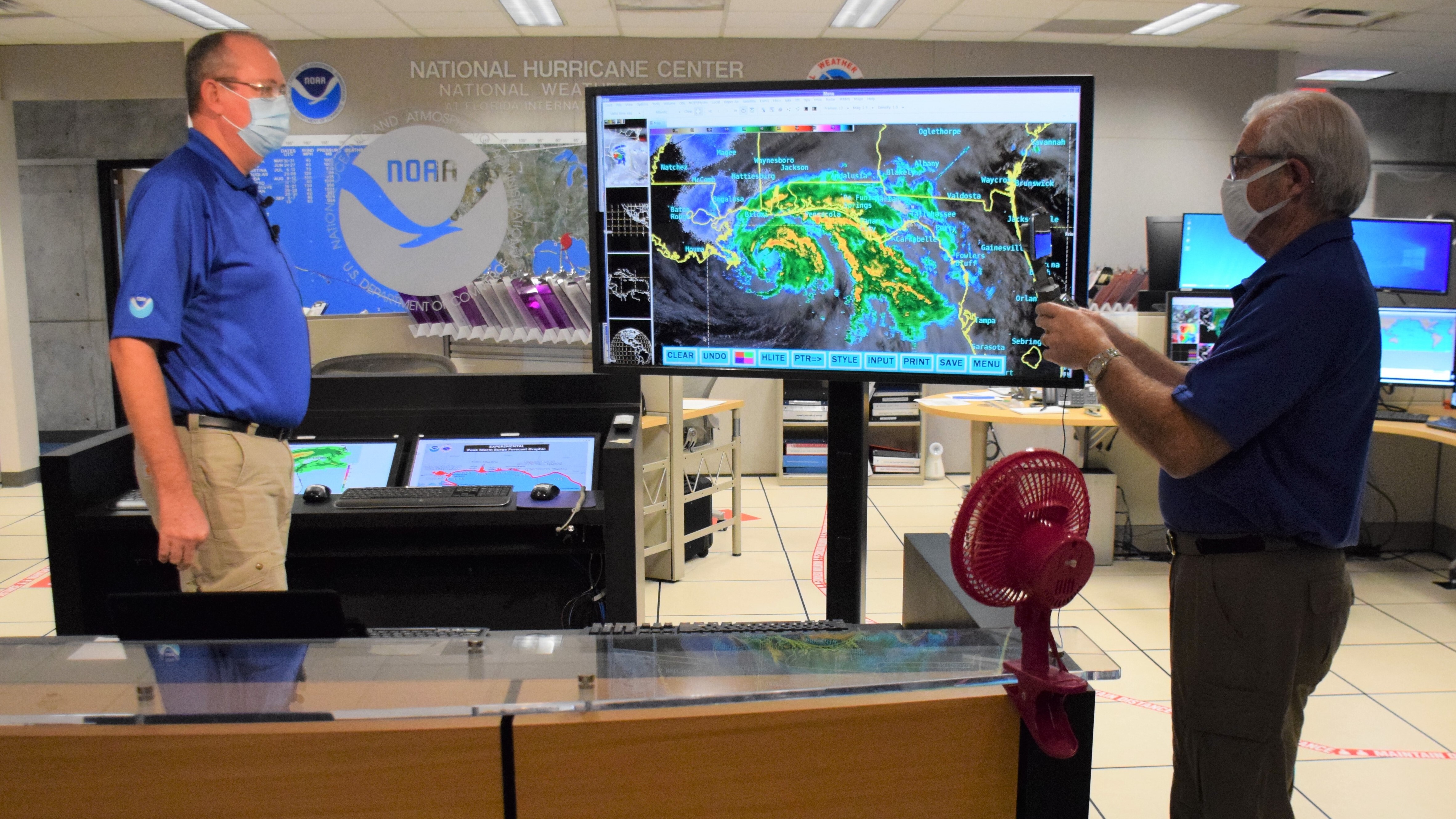
The forecast must go on
As Hurricane Sally hovered off the coast of Mississippi on September 21, 2020, National Hurricane Center (NHC) Director Ken Graham (left) and NOAA Communications Officer Dennis Feltgen (right) teamed up to provide Facebook Live broadcasts from the NHC operations area. Graham used the platform to provide important information about the coming hazards. Facebook Live is an important tool for the National Hurricane Center, experiencing four million views in 2020 alone.
Photo by NOAA National Hurricane Center
*NOTE: These photos are from Fiscal Year 2020, which ran from October 1, 2019 through September 30, 2020.


